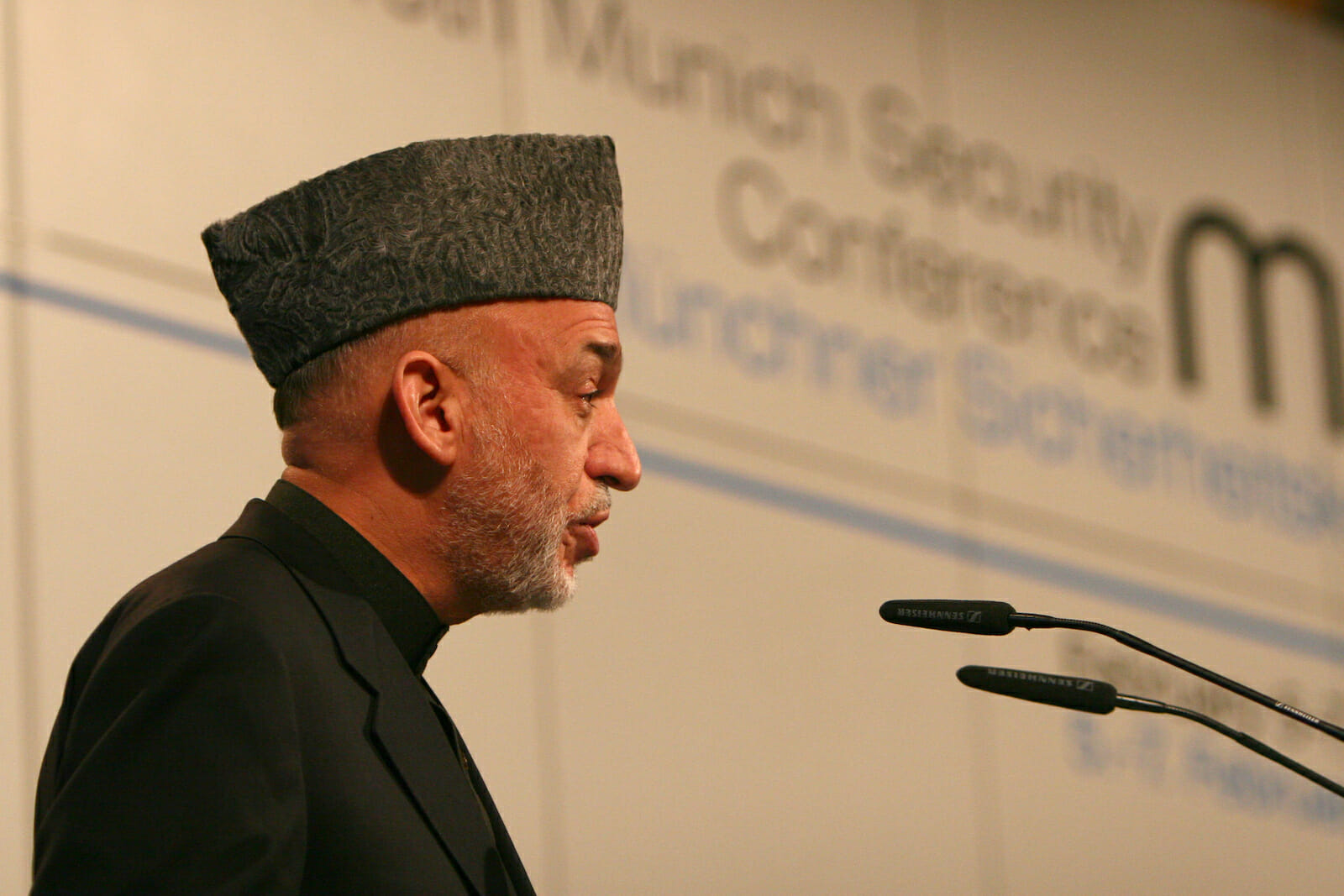
The Impending Afghan Funding Gap
One of the most pressing issues currently facing Afghanistan is the difficult economic transition set to occur at the end of 2014. Although security is the concern that grabs headlines, it’s the economy, and the ability of the Afghan government to afford, that will determine the long-term success of the Afghan state. Sadly, it is highly unlikely that the Afghan government will be able to domestically source revenue to cover the military and security expenses it faces, let alone finance development and the social safety net, thus far provided largely by NGOs and donors nations, that the population has come to expect.
Although significant funding has been committed by donor nations it falls well short of the $10 billion a year through 2025 that President Hamid Karzai asked for. The $10 billion request represents a significant figure for foreign donors, between 61% and 78% of GDP depending on which GDP estimates are used. The $4 billion committed by the international community at the 2012 Tokyo Donors Conference is not even a sure thing, as donor fatigue and historic failures to live up to development aid commitments are likely. This means, in the best-case scenario, that the government of Afghanistan would face a budget shortfall of at least $6 billion a year starting in 2014, but odds are it will be far greater.
Afghanistan is staring at a difficult future, made all the more so by the fact that it is impossible to judge what past vast sums of international development and security money have accomplished, making requests for more especially problematic.
The United States and Europe are under significant pressure at home to cut military and civil spending, and even donors that are not under pressure have generally failed to meet aid commitments to Afghanistan. Afghanistan must prepare now for a future in which the government budget is significantly diminished, as the ongoing troop reductions preface even more dramatic decreases in development assistance.
According to a recent USAID report on Afghanistan, if foreign governments treat development aid in Afghanistan anything like they did in Iraq, the government of Afghanistan would see development aid decrease by around 70% once troops withdraw. Such decreases are a significant cause for concern. Looking back over Afghanistan’s history, one finds that when the central government was well funded, it was at least able to maintain control of the country, if not govern it to some degree. Absent such funding, the situation deteriorated rapidly.
The most recent example of this is the Najibullah regime, which was kept in power through large-scale military support by the Soviet Union after its withdrawal from Afghanistan in 1989. According to Mark Katz, a professor at George Mason University and author of Leaving without Losing: The War on Terror After Iraq and Afghanistan, “as long as the Afghan regime received the money and the weapons, they did pretty well and held on to power.” There are significant differences between the current conflict and the Soviet era conflict, but in the end, an army, and government bureaucrats as well, march on their stomachs, something only possible with adequate funding.
If money to finance the government is the key to a successful transition then there should be more focus on the economic dimensions of the conflict then there are currently. Any focus on these dimensions is complicated by the lack of reliable information as to the status of the Afghan economy. In turn, there is little evidence as to which economic development programs are successful and should continue, a pressing issue given the impending limitations on funding. Because no reliable economic data exists, there are no breakouts of the economy that can be considered accurate and thus be used for planning purposes. Even relatively simple economic indicators such as GDP are suspect in Afghanistan; estimates of the Afghan GDP for 2011 range from the $16.3 billion on the high-end to $12.8 billion on the low end, a difference of 27%.
Since 2001 the Afghan economy has certainly grown rapidly, with GDP rising at around 9% a year, according to the World Bank, unfortunately, growth must be taken with a grain of salt given that it has been almost completely driven by aid, and thus cannot be considered real economic growth. This is nothing new for Afghanistan. The country has been dependent on foreign sources of financing since its earliest days. Afghanistan received massive amounts of Soviet aid in the 1980s and early 1990s and had one of the highest levels of per capita aid in the world during the 1960s and 1970s. During much of the 19th century Afghan rulers received large subsidies from the British, and, if one looks even further back, the various rulers of Afghanistan have relied on plunder from the Indian subcontinent to finance the state.
Historically, the Afghan state has never bothered to mobilize tax revenue from its own people to cover government expenses. As a result, the idea of a social contract between the state and the Afghan people has long been missing. Instead, the historical pattern has been to use external resources to “buy loyalty” and provide security and political stability. The failure to coordinate, audit, and thoughtfully deploy international aid, a failure that can largely be placed at the feet of the United Nations, threatens to continue an Afghan legacy of failed economic development and poor public financing. On the bright side, there are examples of countries that have successfully transitioned from war to peace while undergoing similar withdrawals of aid, specifically Bosnia and Herzegovina and Mozambique, but as a recent World Bank study suggests, there were significant mitigating factors in both cases. Perhaps most importantly, neither economy had become as accustomed to high aid inflows as Afghanistan.
In searching for a comparable, the best is probably Somalia, which experienced an abrupt decrease in development aid in the late 1980s that led to a dramatic government-funding gap and a subsequent rapid collapse of the state. This was followed by a civil war, which started in 1988 and is still ongoing. Projecting the current Afghan funding gap to 2020, the World Bank estimates that under the best of conditions, the government’s operating budget would still be short 16% of GDP. In comparison, the financing gap that triggered the recent financial crisis in Greece was close to 13% of GDP.
In short, the economic picture in Afghanistan is not promising. Significant emphasis has been placed on the extractive industries as a savior. Sadly, the mineral wealth of the Afghan state is only likely to benefit the state in the long run. Furthermore, although estimates of Afghanistan’s mineral wealth are significant, ranging from $900 billion to $1.4 trillion, these numbers do not represent the true commercial value of the underground riches, only the total market value of an estimated volume of resources, and ignoring the sizable investment costs needed to access them.
Even if the security situation was good, and mine development was progressing smoothly, it is unlikely that revenue would contribute enough to the government to fill the funding gap. In 2010, Afghan mining operations accounted for less than 1% of GDP and contributed only $32 million to government coffers. Realizing significant gains from mining operations will require adventurous foreign investors willing to sink billions into mine development and country infrastructure, and even if started today the mines would be unlikely to come online for several years.
Going forward it is probably likely that the US government will continue to underwrite the security side of Afghan government expenses out of fear of what might happen otherwise, but the long-term success of the state is equally dependent on organic economic growth as it is security. Absent the necessary funding to cover economic development expenses, such growth is unlikely to occur. In a country as devoid of private wealth as Afghanistan, success without significant underwriting of the economy and government is a long shot at best. The failure of the international community to address this issue sooner is probably the most significant failure of donor nations to date.

